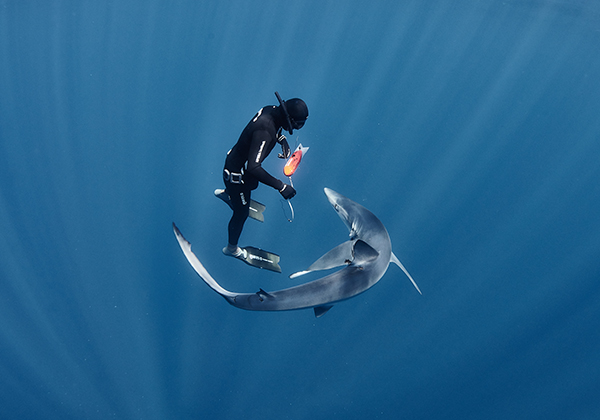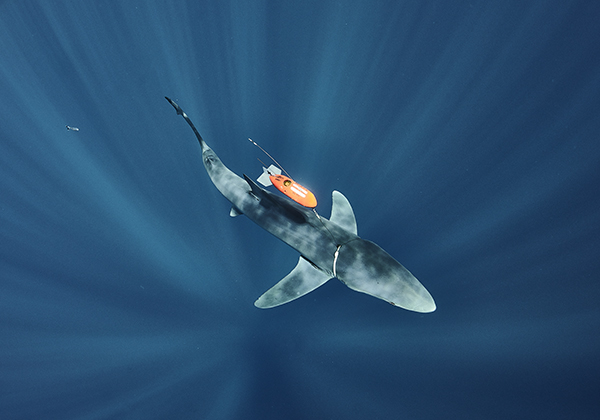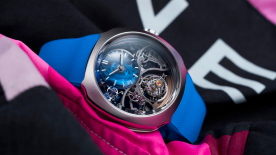Ulysse Nardin has just offered a grant to the Azores University’s marine research center to acquire ten pop-up biologging sensors to tag blue sharks in the Atlantic and document our knowledge of this endangered species. Swimming with blue sharks, his Diver 44mm on the wrist, Buyle tags marine animals in their natural environment using non-invasive techniques. Buyle is using his underwater photography and free diving skills to change the way we see the seas.

Many marine species are difficult to study because components of their lifecycles occur solely or partially outside of the observable realm of researchers. Advances in biologging tags have begun to give us glimpses into these unobservable states. However, many of these tags require rigid attachment to animals, which normally requires catching and restraining the animals. These methods become prohibitive with large, dangerous, or rare species, such as large predatory sharks, and can have significant consequences for individual survival and behavior. Therefore, there is a need for methods and hardware to non-invasively and rigidly attach biologging tags to sharks that present limited effects on the animals and researchers.
Blue sharks tagging
Scientists in the Azores islands of Portugal are gaining a new understanding into the lives of one of the ocean's most fascinating and mysterious creatures, the blue shark (Prionace glauca). Jorge Fontes, an Azorean native marine ecologist at Okeanos-UAc marine research center, University of the Azores, leads a team of researchers studying this charismatic elasmobranchs in the Azores archipelago. Though recreational divers come from all over the world to see the memorizing sharks, not much is known about the natural history fine scale behavior and habitat use. With the help of Fred Buyle, combining their amazing freediving skills with creative non-invasive attachment methods and state-of-the-art prototype data and video logging towed tags, Jorge Fontes has been pioneering the investigation of their fine-scale behavior and ecology, providing a new and unprecedented look into the life of these mysterious and elegant sharks.

The beauty of the new non-invasive tagging method lays on its simplicity. Like an underwater cowboy, the free divers place a self-releasing “lasso” that is retained on the shark’s pectoral fins as they constantly move forward to force the water flow through the gills, towing the low drag torpedo shaped camera tags and sensors. These innovative tags, rated to 2000 meters, combine multiple high frequency accelerometer, magnetometer, speed, depth, temperature sensors as well as HD video. At night and bellow 100 m, two red LEDs are triggered to allow a glimpse into the world of darkness that contrasts with the crystal-clear water at the top of the seamounts. Red lighting is designed to not impact the behavior of both the sharks and their prey. After 24 or 48h, the lasso dissolves and the tag floats to the surface and to transmit satellite and radio beacons used to track and recover the tags for data download and recharge for the next deployment. Using these tools, the team will be able to learn some of their secrets.
Bold, respectful and talented, Fred Buyle has not finished surprising us.






